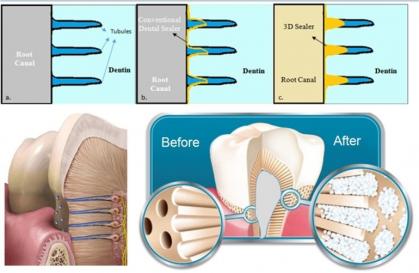A Novel Expandable Endodontic Biomaterial


Inventor(s): Mohammad Ali Saghiri
Awarded: June 2020
Summary: More than 41,000 root canals are performed each day and more than 15 million root canals are performed every year in the United States. Considering the amount of root canals performed worldwide shows the huge market for the (bio)materials produced in the field of endodontics. These numbers are expected to rise with longer average life expectancies and the increased access to care.
This novel obturation method and material would allow for a safer, easier, quicker and more affordable procedure that can be performed by more providers to a wider range of patient populations. Decreased chairside time spent by the clinicians as well as ease of application with minimum training are key success factors for global commercialization of this obturation material.
This expandable polymer sealer consists of isocyanate and polyols. The expansion begins when the polymer contacts with moisture. Foaming and expansion happen simultaneously as foaming happens due to gas production (CO2) which is a result of hydrolysis (by-product). It is unique in some ways as almost all the currently used root canal sealers show shrinkage upon setting which is an important drawback. The gap produced during setting provide enough space for microorganisms to continue their pathogenicity.
Market Applications:
- Root canal sealer
- Temporary filling material
- Core obturating material
